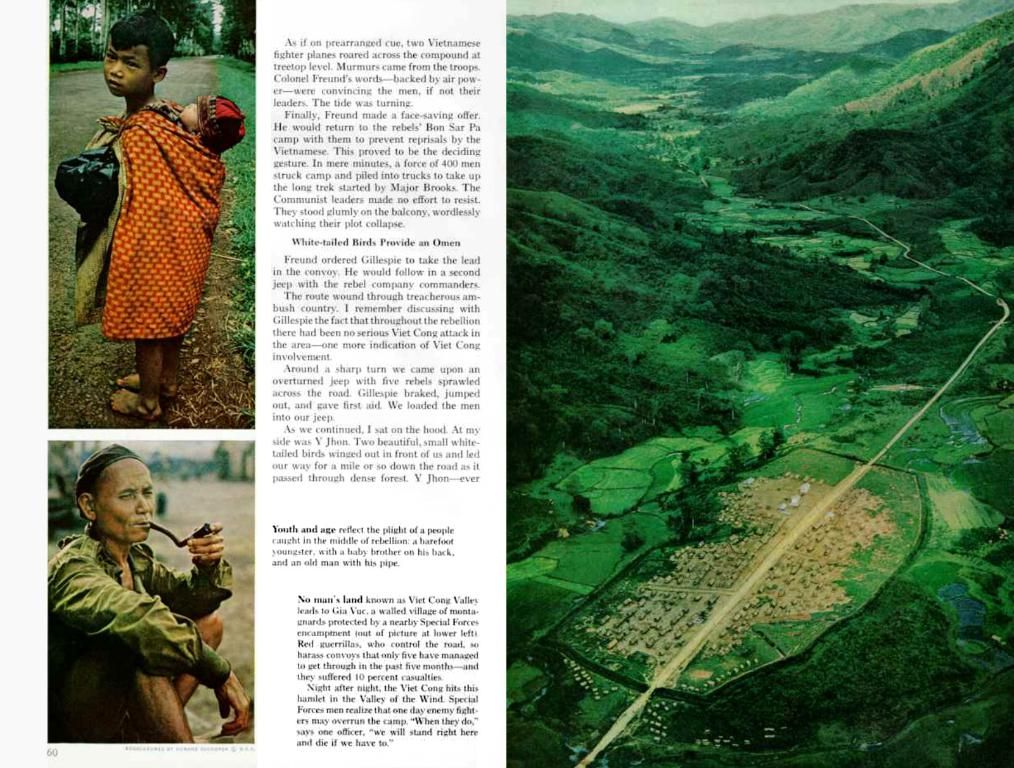Searing Oral Discomfort? Discover Instant Comfort Solutions Now!
Savoring that piping hot cuppa or cheesy slice, ain't it tempting? But once the scalding burns your lips or tongue, you'll regret that indulgence in no time!
Thankfully, most food and beverage burns are just minor nuisances, according to Dr. Sam Mandell, a surgeon at The UW Medicine Regional Burn Center at Harborview Medical Center.
Luckily, most tongue and mouth burns heal in about a week. But if you're looking for relief in the meantime, fret not! We've got some tips for you.
How hot is too hot?
Prevention is key when it comes to burns from hot food and beverages, asserts Dr. Mandell.
While every individual's tolerance differs, generally, anything above 110 degrees Fahrenheit can cause a superficial burn, and anything 160 degrees Fahrenheit or higher will cause an instant burn.
This means that the majority of beverages served at your local café are hot enough to scald you. The National Coffee Association recommends brewing coffee at 195 to 205 degrees Fahrenheit—well above the threshold for a burn. So, if you're ordering your latte extra hot or buying drip coffee, remember to let it cool down, especially if you have kids.
"Anything over 120 degrees Fahrenheit can scald kids or give them a second-degree burn," Mandell warns. "Oftentimes a drink that might not bother you can burn them."
If you're ordering for your little one, give the drink some extra time to cool before letting them take a sip. And keep any hot liquids out of their reach, lest they accidentally spill and burn themselves.
The symptoms of mouth and tongue burns
Scald burns from food and drink are usually first-degree, superficial burns that only affect the outermost layers of your skin. The main symptoms include redness, swelling, irritation, and discomfort. However, you might also notice a decreased sense of taste in the burned area.
"In most cases, you won't have deeper damage to the tissue," assures Mandell. "This is because when you drink something that's too hot, you realize right away and stop drinking, so it's a small amount and a short contact time."
If you notice blisters or skin peeling on your lips or tongue, it could indicate a deeper second-degree burn, in which case you should consider a visit to your doctor, either in-person or through telehealth.
What you can do to feel better
While most burns from hot food and drink are minor, they certainly aren't pleasant. Here are some tips to reduce swelling and soothe discomfort.
Drink cool water
Cool water can provide some pain relief, reduce swelling or inflammation, and help control the initial burn. Avoid drinking ice water or sucking on an ice cube as it could stick to the burned area or deepen the injury.
Maintain good oral hygiene
Keep up with brushing and flossing. A saline rinse or gentle mouthwash can also help, so long as there are no open sores (you know the saying about salt and wounds).
Moisturize safely
A dab of petroleum jelly can help protect and moisturize your skin, though most lip balms will do the trick, as long as you avoid anything with added scents or pigments.
In the realm of health-and-wellness, it's crucial to be cautious when consuming hot beverages, as advised by Dr. Sam Mandell. While the tolerance for heat varies among individuals, anything above 110 degrees Fahrenheit could potentially cause a superficial burn, with drinks served at local cafes often reaching such temperatures. Interestingly, the science behind this recommends brewing coffee at 195 to 205 degrees Fahrenheit, which can potentially scald sensitive individuals or cause second-degree burns in children. Thus, taking a moment to let your drink cool down, especially when ordering beverages for children, is a simple yet important step towards health-and-wellness and news worth sharing.




